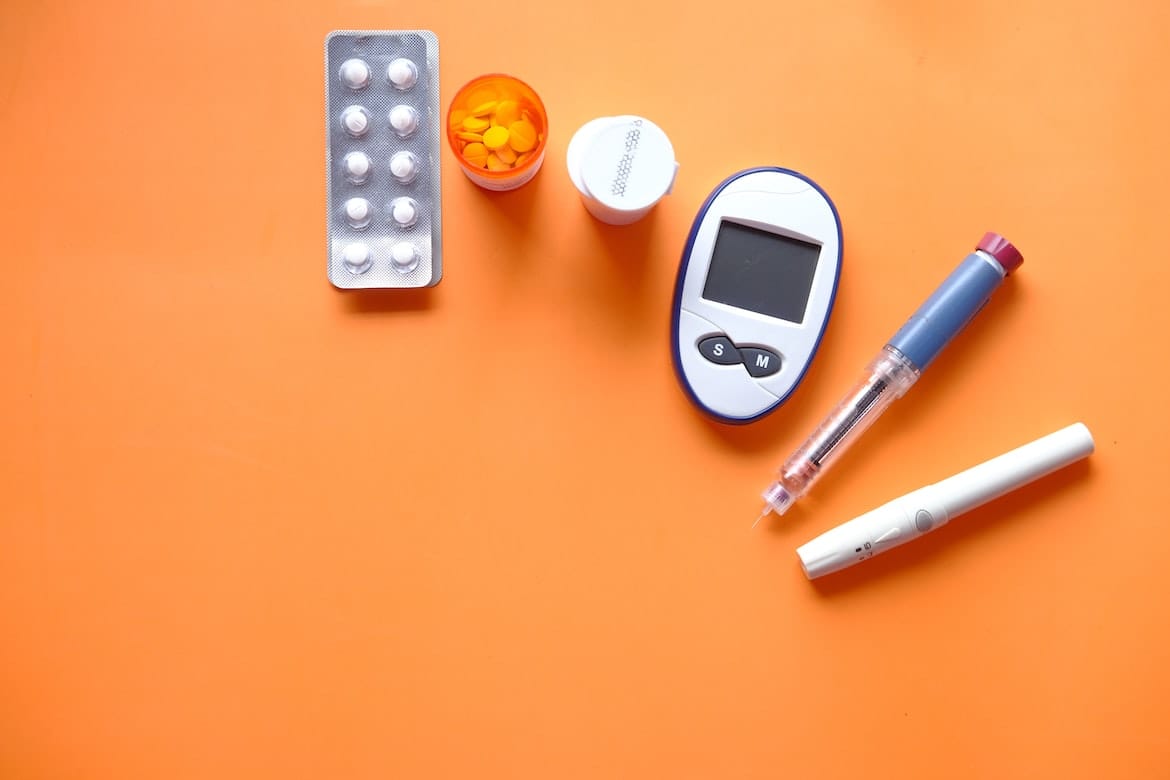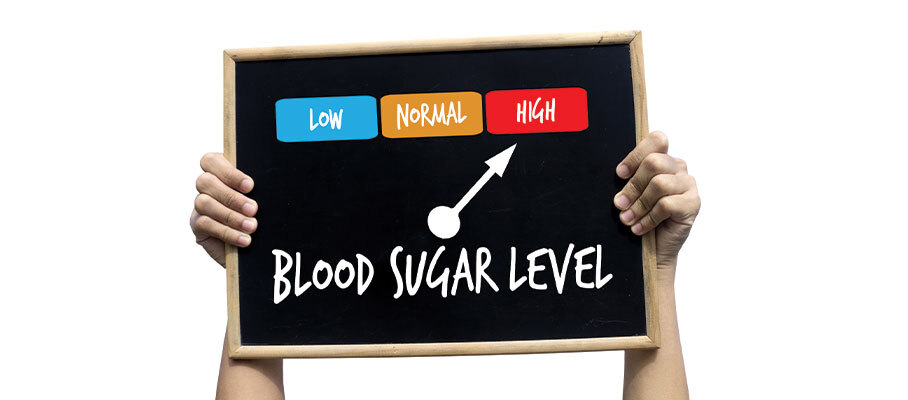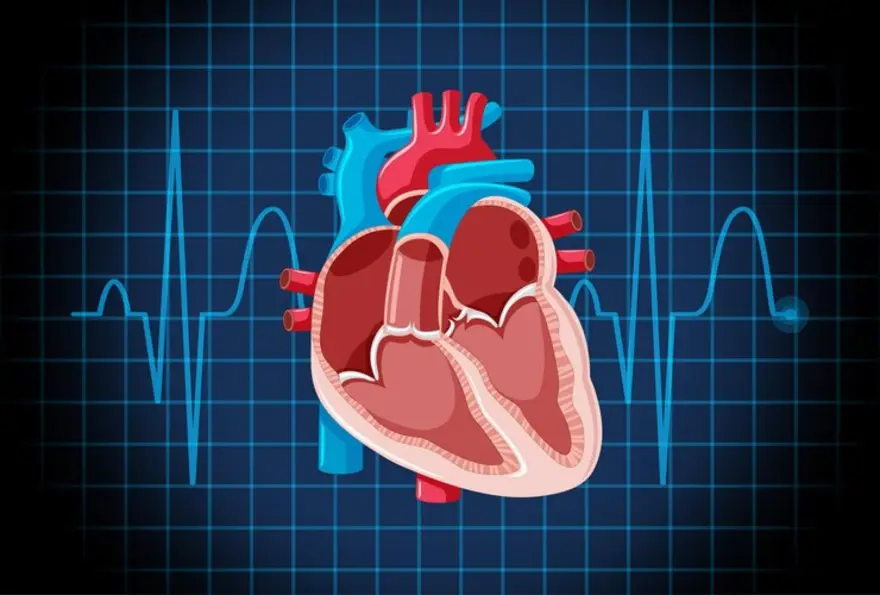blood sugar levels
What is Hyperglycemia: Symptoms, Causes and Treatment
What is hyperglycemia? Hyperglycemia is the clinical name for high blood sugar. It occurs when you have excess sugar or glucose in your blood. This happens when your body does not have enough insulin or when your body can not use the insulin effectively. Insulin is a hormone made by the pancreas. It helps sugar in your blood to enter the muscles, fat, and liver, where it is used as energy. Insulin also helps maintain healthy blood sugar levels. Hyperglycemia is a sign of diabetes. Unchecked high blood sugar can damage your organs and nerves and lead to several complications. However, with timely detection, medical treatment, and changes in lifestyle and diet, you can maintain your blood sugar levels and prevent other health conditions. Let us learn more about hyperglycemia symptoms, its causes, and treatment. What is blood sugar? Sugar comes from the food you eat. It comes from carbohydrates in food and drink and is the primary energy source. Insulin helps transport glucose from your bloodstream to all cells of your body. What are the blood sugar levels in hyperglycemia? Checking your blood sugar levels is crucial in detecting hyperglycemia. The following chart will help you understand and maintain healthy blood sugar levels. Blood sugar is measured in milligrams per deciliter (mg/dL). Fasting (After 8 hours of not eating) Post Prandial (After eating) Normal 70 - 90 mg/dL Below 140 mg/dL Pre-diabetes 100 - 125 mg/dL 140 - 180 mg/dL Diabetes (Hyperglycemia) 126 mg/dL and above Above 200 mg/dL What are hyperglycemia symptoms? You may not notice any hyperglycemia symptoms until your blood sugar levels rise above 180 mg/dL over several weeks. Some people may not experience symptoms even with blood sugar levels at more than 250 mg/dL. The early symptoms of hyperglycemia are: Polydipsia or increased thirst Frequent urination Weakness and fatigue Headache Blurry vision If left untreated, hyperglycemia can cause ketoacidosis or a build-up of toxic acids in the blood and urine. Symptoms of this condition include, Fatigue Shortness of breath Nausea and vomiting Weight loss Dry mouth Fruity-smelling breath Vaginal infections Skin infections Slow-healing wounds Abdominal pain Confusion Please consult a doctor if you experience any of the above symptoms. What causes hyperglycemia? Hyperglycemia usually occurs due to the lack of insulin. Insulin production is affected due to issues in the pancreas. Hyperglycemia also happens due to your body's inability to use insulin. This is known as insulin resistance. Obesity, physical inactivity, a high-carb diet, and medications like corticosteroids, blood pressure medicines and some psychiatric medications may cause insulin resistance. Other causes of hyperglycemia are: Lack of physical activity Improper diet Illness or infection An injury or a surgery Certain medications, like steroids or immunosuppressants Stress and lack of sleep What are the complications of hyperglycemia? Long-term hyperglycemia can lead to several health conditions due to damage caused to the blood vessels and tissues. Complications due to hyperglycemia include, Heart disease Stroke Nerve damage Kidney damage or kidney failure Retinopathy or damage to the blood vessels of the retina leading to blindness Bone and joint issues Gastroparesis or stomach paralysis Feet problems such as tingling, numbness, pain, skin infections, and ulcers due to loss of blood flow Infections in the teeth and gums How is hyperglycemia diagnosed? If you observe symptoms of hyperglycemia, please consult your doctor at the earliest. They will advise blood tests to diagnose diabetes and prescribe a treatment plan. Blood tests include: Fasting glucose test Glucose tolerance test HbA1C Test or glycated haemoglobin A1C. This blood test shows your average blood sugar levels for the past two to three months. What are the treatment options for hyperglycemia? While insulin and medications are the common treatment for hyperglycemia, the easiest way to control your blood sugar is by making lifestyle and dietary changes. For people who do not require insulin, nutrition, regular exercise, and oral medications will help manage hyperglycemia. Your doctor will prescribe the medicines based on your blood sugar levels and overall health. Let us take a look at the ideal diet to manage hyperglycemia. It is advisable to include foods from all the food groups to maintain healthy blood sugar levels. These are, Vegetables: Green leafy vegetables, carrots, tomatoes, peppers, sweet potatoes, green peas and corn. Fruits: Citrus fruits, like oranges, lemons, berries, apples and bananas. Whole grains: Millets, like jowar, bajra, and ragi and other grains, like rice, whole wheat, oats and quinoa. Proteins: Nuts, peanuts, beans, tofu, eggs, fish and chicken Low-fat dairy: Yogurt, cheese and milk Fats: Healthy fats like olive oil, nuts and seeds, avocado, and heart-healthy fish, like salmon and mackerel. Points to remember: Avoid saturated and trans fat, processed foods, fried foods, baked goods, foods high in salt, sugary drinks and fruit juices. Eat small meals at regular intervals. Avoid fasting for long hours. Follow a regular exercise routine, like walking, running, cycling, swimming or yoga, to maintain healthy blood sugar levels. Exercising will also improve your heart health, reduce stress and benefit your overall health and well-being. Please take your insulin and medications as directed by your doctor. Check your blood sugar regularly. You could use a home blood sugar test kit or get your blood sugar levels tested at a certified laboratory. Book Blood Sugar Test To sum up Unchecked blood sugar levels lead to several health conditions. Therefore, please consult a physician if you observe hyperglycemia symptoms like frequent urination, fatigue, intense thirst or blurry vision. Your doctor will prescribe medications or insulin based on your blood sugar levels. Follow a healthy diet and exercise regularly to control blood sugar levels. Always pick a reliable pathological laboratory like Metropolis India for regular blood tests. They offer several diabetes-related blood tests and packages and guarantee timely and accurate results.
Blood Cells: Types and Functions in the Human Body
Can you believe that just two cells, the sperm and ovum, differentiate into almost 100,000,000,000,000 cells to make up your body? And while it may seem excessive, every single cell has its function. The cell is the simplest form of life, and blood cells are the most vital as they are primarily responsible for transporting nutrients and oxygen to the rest of the body and bringing waste materials and CO2 to be expelled from the body. Here is all you need to know about the different types of blood cells and why they are needed in the body. Blood Cells The body contains twenty to thirty trillion blood cells. These cells are seven microns in diameter and have the width of a spider-web silk strand. Your blood cells, skin, bone and nerve cells, are made of hydrogen, oxygen, nitrogen, carbon, magnesium, potassium, copper, zinc, silver, gold and numerous other elements that help their function. Types of Blood Cells There are three major types of blood cells: white blood cells, red blood cells and platelets. Here is a little more insight into the different types of blood cells. White Blood Cells These are the types of blood cells that help your body fight against infections. They make up your immune system and come in three different types. Granulocytes: neutrophils, basophils and eosinophils Lymphocytes: T lymphocytes and B lymphocytes Monocytes Red Blood Cells These are the body's oxygen carriers; they take oxygen from the lungs and transport it to the other cells in the body. The protein haemoglobin present inside the red blood cells is responsible for the transportation of oxygen. Platelets These are the types of blood cells that aid in the clotting of blood. When you get a cut or bruise, the platelets stick together and stop excess bleeding. Development of Blood Cells All the different types of blood cells in the human body start their journey as blood stem cells formed in the bone marrow. These stem cells then divide and multiply within the bone marrow and produce the other types of blood cells. The blood stem cell grows into any blood cell your body needs, including red blood cells, white blood cells or platelets. The bone marrow creates a large number of blood cells per second. A well-oiled and working system ensures that your body creates the right amount of each type of blood cell to be healthy. However, when there is a glitch in the system, the blood cells do not develop properly or rapidly multiply, causing diseases like blood cancer. Functions of Different Types of Blood Cells Red Blood Cells Your bone marrow creates 2-3 million red blood cells every second. These red blood cells are also known as erythrocytes. They are the most common type of blood cells. They usually circulate through the body for 120 days before they are removed by specialised cells called macrophages. In humans and other mammals, mature red blood cells do not have a nucleus; this gives the blood cells more space to store haemoglobin, the oxygen-binding protein that helps transport oxygen to the rest of the body. Red blood cells have a biconcave shape that helps increase the cells' surface area, allowing oxygen to diffuse across the surface. If a blood test shows low haemoglobin, you may be at risk of anaemia. In this case, you may appear pale because the haemoglobin gives the blood a red colour. You may also feel tired quickly and experience shortness of breath. White Blood Cells White blood cells comprise your immune system; they come in various shapes and sizes depending on their function. Some cells may include nuclei with multiple lobes, whereas others have a single round nucleus. One type of blood cell, granulocyte, contains multiple packets of granules in its cytoplasm. These white blood cells circulate through the blood till the body gives them a signal indicating it is damaged. In response, the white blood cells squeeze through the blood vessels and reach the source of the signal to help start the healing process. Anyone with a low white blood cell count will experience low immunity and get sick more often. The symptoms of the disease will also be significantly worse for those with low white blood cells. Different types of white blood cells have different functions; for example Neutrophils help digest bacteria and other pathogens. Monocytes are young white blood cells that can become macrophages if they leave the blood and migrate to the tissue. Lymphocytes are found in two main classes: B cells mature in the bone marrow, and T cells mature in the thymus gland. When these cells get activated, they can trigger different immune responses. Book CBC Test In Summary There are different types of blood cells in the body that carry out critical functions. A complete blood count (CBC Test) is a simple blood test that can help you ensure you have healthy levels of the different types of blood cells. It also checks your haemoglobin levels so you can identify the possibility of anaemia. Metropolis Labs offers a wide range of diagnostic tests and the option of at-home sample collection to keep track of your health from the comfort of your home. Check out the entire list of diagnostic tests and book yours today.
Diabetes in Children: Types, Symptoms & Management
Diabetes is a common chronic condition affecting people of all ages including children. As per the estimated results, around 463 million people worldwide were diagnosed with diabetes in 2019. But now, more than 500 million adults are estimated to be living with diabetes. Millions of children worldwide also have this medical condition. According to Dr Moumita Misra, Head-Lab Operations, Metropolis Healthcare Mumbai,diabetes is a serious problem for children and adults as it can cause serious health complications. It can result in several risks to life, especially if left unchecked for a long time. India is the diabetic capital of the world and the number of children affected by it are increasing every day. What is Diabetes? Diabetes is a medical condition characterized by higher blood sugar levels than normal. It occurs when the pancreas either does not produce enough insulin or when the body does not respond to the insulin produced. When either of these happens, the body cannot absorb sugar from the blood, resulting in excess blood sugar levels. Incidence of Diabetes in Children Previously, type 1 diabetes was found to be the most widespread form of diabetes affecting children and adolescents. So it was referred to as juvenile diabetes. This type of diabetes results from malfunctioning of the pancreas, which does not produce a hormone called insulin. This hormone is responsible for facilitating the absorption of sugar or glucose by the cells in the body, thus providing them with the necessary energy. But now, younger people are also getting diagnosed with type 2 diabetes, referred to as adult-onset diabetes. The increasing prevalence of obesity has also caused it to become more common in children and teenagers. This condition results in the (child's) body's inability to effectively produce and use insulin. Children pose a higher risk of type 2 diabetes if they are overweight, have very little physical activity, have a history of diabetes in the family, etc. Causes of Diabetes in Children The exact cause of type 1 diabetes is still unknown but genetics and environmental factors are believed to cause this condition. If left untreated, high blood sugar levels can lead to life-threatening complications. Modern lifestyles with increased consumption of processed or junk food, reduced physical activity and prolonged screen time are all leading to the growing incidence of childhood obesity. It is often linked to metabolic syndrome and polycystic ovary syndrome. These two syndromes are proven risk factors for the development of type 2 diabetes. Children with a family history of diabetes might get diagnosed with this medical condition. Additionally, pregnant women who develop diabetes are at a higher risk of giving birth to infants with a risk of developing type 2 diabetes. Symptoms of Diabetes in Children Parents can ensure early detection of diabetes in their children by looking out for the following symptoms: Increased thirst Extreme hunger Frequent urination Fatigue Blurred vision Dehydration Fruity smelling breath Behaviour change or irritability Tired and thinner Diagnosis of Diabetes in Children Taking your child to the hospital immediately is important if they experience any symptoms of diabetes. These are some of the methods that help diagnose diabetes in children: Type 1 Diabetes Random blood sugar test Glycated haemoglobin test: Testing the child’s average blood sugar for 3 months (the past 3 months). Fasting blood sugar test: A blood sample is taken from a child who hasn't eaten anything for hours. Type 2 Diabetes Random blood sugar test Fasting blood sugar test Glycated haemoglobin test Oral glucose tolerance test: The test is conducted after the child fasts for a night and then is given a sugary liquid. Treatment for diabetes includes medication and monitoring of blood glucose levels. Treatment of Diabetes in Children Taking insulin injections Children with type 1 diabetes must take insulin injections daily. Rapid-acting insulin, intermediate-acting insulin, long and ultra-long-acting insulin and short-acting insulin are the different types of insulin. Blood sugar monitoring At least 4 times a day, blood sugar monitoring may be advised. Continuous glucose monitoring Continuous glucose monitoring using temporary monitoring of the skin installed underneath the skin may be essential for some children. Medication Medicines like Metformin (Glumetza) and Liraglutide (Victoza) are prescribed for type 2 diabetes in children. How Can Diabetes in Children Be Prevented? Maintain healthy eating habits and body weight. Cut down on too much consumption of junk food Ensure your children engage in regular physical activities (make them stay active). Limit their screen time on tv, computer and other appliances. Ensure that they are getting enough sleep. Check their blood sugar levels on a routine to make small changes in their food, physical activities, etc. Conclusion Diabetes in children may be overwhelming at times but your child is not alone. There are support groups where you can connect with other parents of children living with diabetes. Diabetes can be controlled by making the necessary lifestyle changes and your child can live a normal life with medications. In case of any queries, you must reach out to your child’s diabetes care team, they can address all your queries and can help your family to move ahead in this journey of living with childhood diabetes.
Confused About What May Be Giving You High Blood Sugar? This Might Help
Diabetes is one of the most common diseases of the present times. It affects the ability to maintain normal blood sugar levels in the body. The affected person has higher than normal blood sugar levels in blood. These elevated blood glucose levels over a longer period of time affects the normal functioning of various organ systems in the body. As expected, the blood sugar levels in the body change largely according to your meals. The diagnosis commonly requires examination of blood while fasting (Blood sugar fasting test) and 2 hours post meals. While the importance of maintaining a healthy diet and regular blood testing cannot be overstated, there are several factors both modifiable and non-modifiable more which determine the ease of maintaining normal blood glucose levels. Some of the most common factors leading to inadequate blood glucose control despite medications are Inadequate or irregular doses of medications which include both injectable insulin injections and oral medications. It remains to be the most common cause for high blood sugar levels in a diabetic patient on medications. There is progressive levels of insulin resistance in the body, which means insulin though present in sufficient amounts is not able to exert its effect of bringing glucose inside body tissues. It results in excessive levels of blood sugars despite normal levels of insulin in the body. This is more common in patients of type II diabetes. The blood glucose targets may not be achieved due to lack of adherence to a balanced diet, many times referred as diabetic diet. Consuming excessive amounts of carbohydrates, too frequent meals and diets poor in complex carbohydrates and proteins are the most common reasons. All these result in blood sugar levels which overwhelm the body’s capacity to produce insulin or the amount of insulin injected in the body. You are less active physically. Exercise helps the body utilise excessive sugar in the blood. Medications taken for other reasons may be adversely affecting your blood sugar levels like steroid, and diuretics. Levels of emotional and physical stress have been historically related to poor blood control levels. Physical stress in the form of any acute illness, common cold, injury and infection mounts to increase body cortisol levels which in turn increase blood glucose levels. Similarly, prolonged durations of emotional stress in the form of family or work related stress mount to increased levels on blood sugar levels. Think stress is affecting your overall health? Check your vitals with a comprehensive test package. Other uncommon reasons Hormonal disorders like Cushing’s syndrome causing excessive levels of natural cortisol hormone in the body, pancreatic diseases like infection, cyst, fibrosis or cancer affecting the body's ability to produce enough insulin. Pregnancy may cause excessive rise in blood glucose levels in some females. The condition is known as Gestational diabetes. It affects 4% of all pregnancies, and is due to production of excessive amounts of hormones promoting an increase in blood glucose levels along with decreased insulin sensitivity in susceptible females. Surgery or trauma may induce stress in body and may cause a temporary rise in blood sugar levels Maintaining blood sugar levels in a diabetic is difficult. But why should we stress on it anyway? Blood glucose is required by various body tissues for normal functioning. It acts as an important source of energy within tissues. But for glucose to enter into most tissues insulin, a protein secreted from pancreas is required. So while glucose in blood is essential for energy requirements of tissues, it is unavailable to body tissues in absence of insulin. Thus insulin has a central role in maintaining normal blood glucose levels and providing adequate glucose to tissues for storage and energy production. So it is either the lack of insulin or the resistance of the body to normal levels of insulin are commonly implicated in causing diabetes and are classically described as type I and type II diabetes respectively. Since excess blood sugar instead of reaching tissues remains in blood for prolonged periods this causes the symptoms and complications of diabetes. Symptoms in a patient and possible complications of poor blood glucose control The classical symptoms of diabetes are excessive thirst, hunger and frequent urination. However, in diabetic patient’s symptoms of excessive hunger, vomiting, breathing difficulty, abdominal pain and loss of consciousness suggest acute complications due to diabetes. Even in absence of these symptoms suggesting acute complications, prolonged periods of poor blood sugar control adversely affect kidneys, vision and peripheral nerves of the body. If you are affected with diabetes and are showing any of these symptoms we suggest you get your blood sugar fasting test done. Testing for blood glucose The Fasting blood sugar levels are determined by drawing blood after 8 hours of fasting, which means blood samples are conveniently drawn early in the morning. A fasting blood glucose of 126 mg/dl or more suggests Diabetes. However, for blood samples drawn 2 hours post meals blood glucose of 200 mg/dl or more suggest diabetes. Apart from these Glycosylated haemoglobin (HbA1c levels) of 6.5% or more suggest poor blood sugar control over a period of 2 to 3 months. Fasting blood sugar range of 100 to125 mg/dl suggests a state of impaired glucose tolerance, which means if blood glucose levels are not adequately controlled by means of lifestyle modifications a person may later develop diabetes. What can you do to maintain your blood sugar levels? Physical activity helps you lower your blood sugar levels. You may want to work with your healthcare provider to provide you with a detailed work out plan to achieve desired goals. Following your diabetic diet plan strictly. Basic understanding on how nutrients like carbohydrates impact your blood sugar may help you sustain your achieved goals. While diet remains the cornerstone of your diabetic control it is often neglected. It requires the help of a nutritionist to provide you with a well curated diet plan specifically designed to meet the demands of your body type and feeding habits. Maintain a healthy body weight. Avoid smoking. Refrain from excessive consumption of alcohol. Regular testing for blood sugar levels. Book your test here fasting blood glucose test.
 Home Visit
Home Visit Upload
Upload


















 WhatsApp
WhatsApp